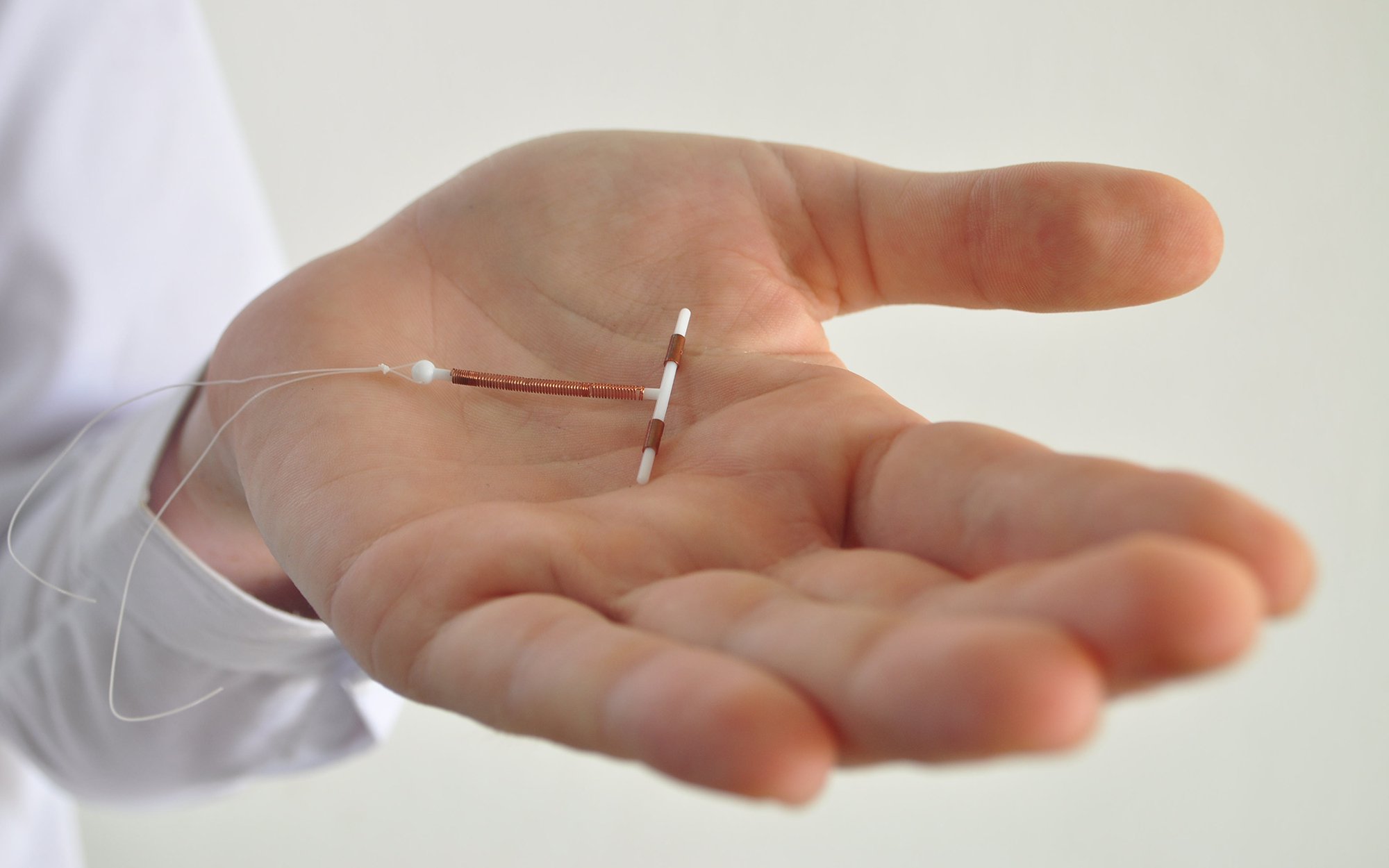What is it?
IUD stands for Intrauterine Device. It is a T-shaped piece of plastic that is often covered with copper wire. Some IUDs also contain hormones or come in different shapes. The IUD sits inside the uterus.
How does it work?
The IUD prevents pregnancy by not allowing a fertilized egg to attach itself to the wall of the uterus. If a fertilized egg cannot attach and grow, it is unable to develop into a fetus.
How do I use it?
Two appointments are required for an IUD insertion, from your health care provider. The first appointment will include information, an exam, and laboratory screenings. The second appointment consists of inserting the IUD and providing follow up instructions. The IUD is usually inserted during your menstrual period. The IUD requires little maintenance. There is a small nylon thread attached to it. You must check to feel that it is still there after every period. This way you know the IUD is still in the uterus. You do this by inserting a washed finger high into the vagina where you will feel the thread.
Removal of the IUD?
Most IUDs are removed easily by a practitioner. Removal is best done during a menstrual period but it can be removed at other times if necessary. The IUD has a life span of 1-10 years depending on which type of device is used.
Who has the best success with an IUD?
Women who:
- have had children but do not wish to have more
- have no history of pelvic infections
- have no history of sexually transmitted diseases
- have only one sexual partner
Pros
The IUD is effective immediately upon insertion. Allows spontaneous sex. No mess.
Cons
Heavier, longer, crampier periods.
Possible spotting between periods.
Possible increased risk of vaginal infections and pelvic inflammatory disease (PID).
Can be expelled from the body without you knowing it.
Effectiveness
Perfect-use failure rate 1.5%
Typical failure rate 5%
Side Effects
Heavier periods with more and worse cramps than before the IUD.
Higher risk of pelvic inflammatory disease (PID), a severe STD that can lead to infertility.
Spotting between periods.
IMPORTANT
The IUD is not recommended for most young women and it is not a recommended form of birth control for teenagers. The IUD can be expelled from the uterus without a young woman knowing it, leaving her unprotected. Also, since the uterus in a teenager is still growing, it is not recommended. Most health care providers are hesitant to give teenagers an IUD, for good reasons. An IUD must be inserted into the uterus by a health care provider, and is often easiest to insert during a young woman’s period. Plastic and copper IUDs need to be replaced about every 10 years. IUDs with hormones must be replaced every year.
